Another Vanderbilt Cup Race Mystery: Was Eddie Rickenbacker the Mechanician in this 1906 Photo?
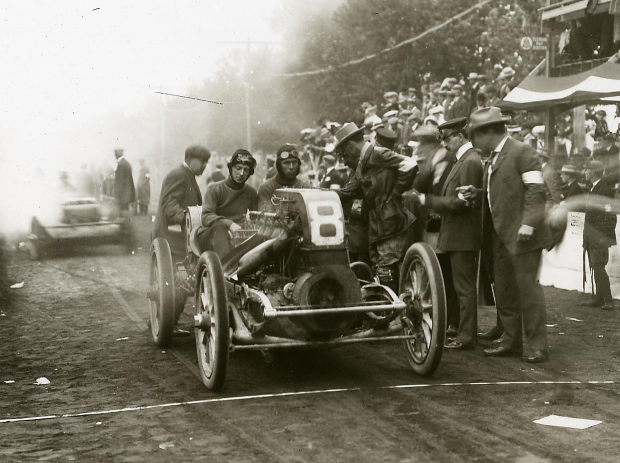
John Bayer wrote: "Not sure the guy in mechanician's seat in Frayer-Miller is Rickenbacker, even at 16. Rick's nose was much broader, and several of the Auburn pics you have posted show that...mystery".
John, you make an excellent point. Let's take a look at the evidence:
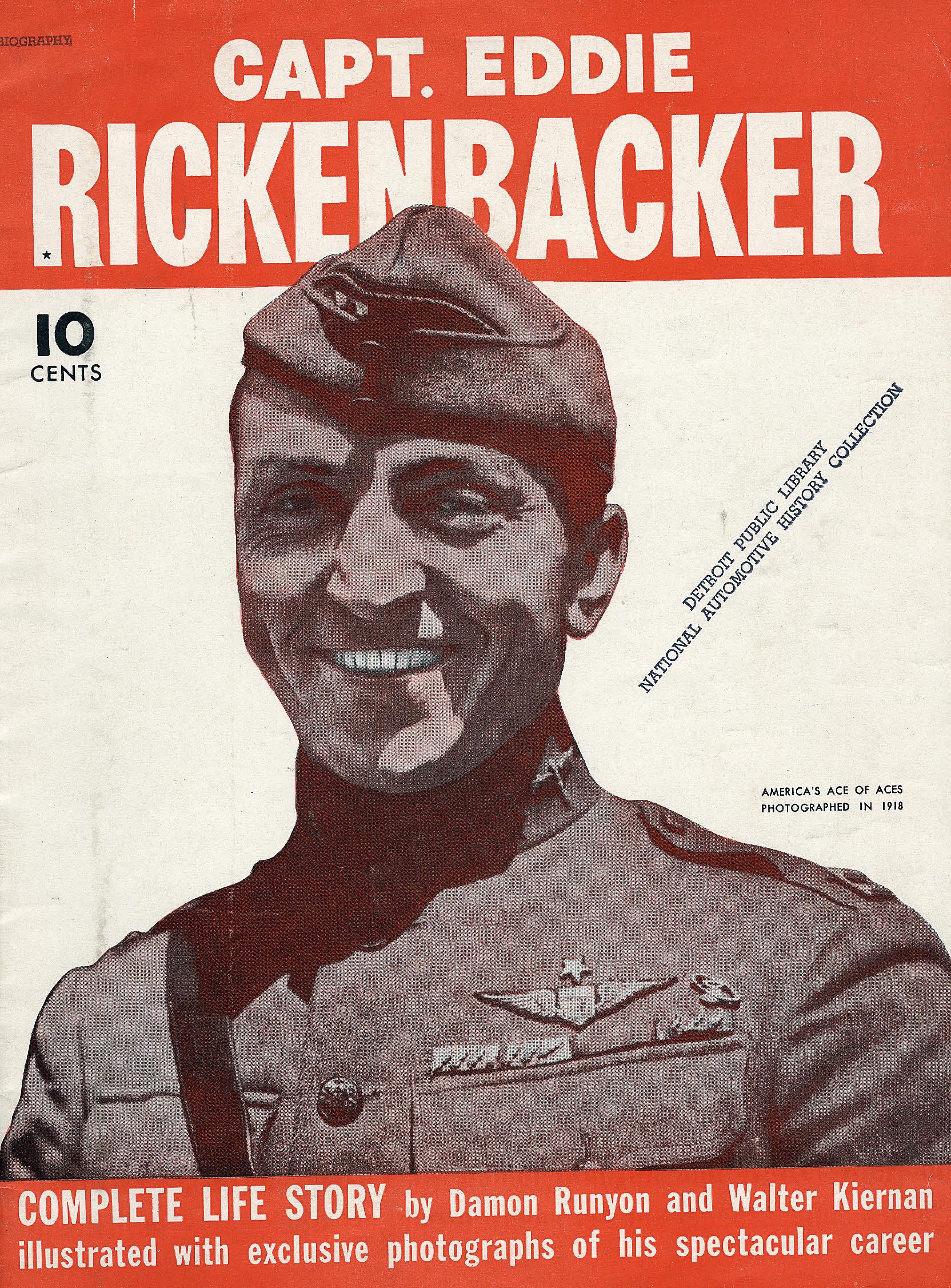 Prior to becoming America’s World War I “Ace of Aces”, an aviation industry pioneer, owner of the Indianapolis Speedway and before changing his last name to Rickenbaker, Eddie was one of the leading drivers in the country. He participated in one American Elimination Trial for the Vanderbilt Cup Race (1906), two Vanderbilt Cup Races (1915,1916), five Indianapolis 500 Races (1911, 1912, 1914, 1915, 1916) and three American Grand Prize Races (1914, 1915, 1916).
Prior to becoming America’s World War I “Ace of Aces”, an aviation industry pioneer, owner of the Indianapolis Speedway and before changing his last name to Rickenbaker, Eddie was one of the leading drivers in the country. He participated in one American Elimination Trial for the Vanderbilt Cup Race (1906), two Vanderbilt Cup Races (1915,1916), five Indianapolis 500 Races (1911, 1912, 1914, 1915, 1916) and three American Grand Prize Races (1914, 1915, 1916).
The above photo shows the #8 Frayer-Miller racer at the starting line of the 1906 American Elimination Trial held on September 22, 1906. The race was conducted to determine the five American cars that would compete in the Vanderbilt Cup Race to be held two weeks later. Referee William K. Vanderbilt, Jr., can be seen standing just to the right of the front wheel.
Unfortunately, the car broke a radius during the first lap and did not qualify for the Vanderbilt Cup Race. Because of its short run, there are no known photos of the # 8 Frayer-Miller except at the starting line.
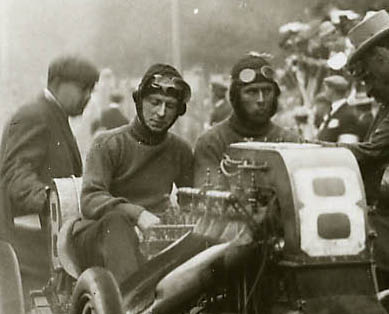 This is a close-up of the presumed team of driver Lee Frayer (right) and 16-year old mechanician Eddie Rickenbacker (left). I always assummed it was Eddie Rickenbacker, although it never was a definitive match. Here's further evidence:
This is a close-up of the presumed team of driver Lee Frayer (right) and 16-year old mechanician Eddie Rickenbacker (left). I always assummed it was Eddie Rickenbacker, although it never was a definitive match. Here's further evidence:
1. Eddie Rickenbacker described his role as a mechanician in the 1906 race in his autobiography:
Eddie recalled the moment Lee Frayer handed him a leather helmet and Zeiss goggles and his role as a mechanician:
"Here, Eddie. I want you to ride with me. I know that you’re young, and this is new for you, but you have a good head on your shoulders, and I think you’re going to make a good one. Now let me tell you what I want you to do.” My major concern would be the dials showing oil pressure and gasoline pressure. As the gasoline tank was mounted on the tail end of the car, it was necessary to keep pressure in the tank in order to force the gasoline forward into the carburetor. When the pressure of either gasoline or oil fell below the minimum, I would have to pump it back....
Our turn came. The flag went down, and Frayer let out the clutch and jammed the accelerator down. I sat beside him as tight as a spoke in a wire wheel. My eyes flicked over the instruments; oil okay, gas okay. I looked ahead as we came out on the course. We were going to win the race!....
“Frayer got everything out of the car that it could give. Perhaps he asked for a little too much on a curve, for the right tire blew out. Our rear end swung to the right, then fishtailed down the road at 60 miles per hour as Frayer fought the wheel to keep from piling into the trees. When he had the car under control, he pulled to the side."
2. The photo was taken at the 1906 American Elimination Trial
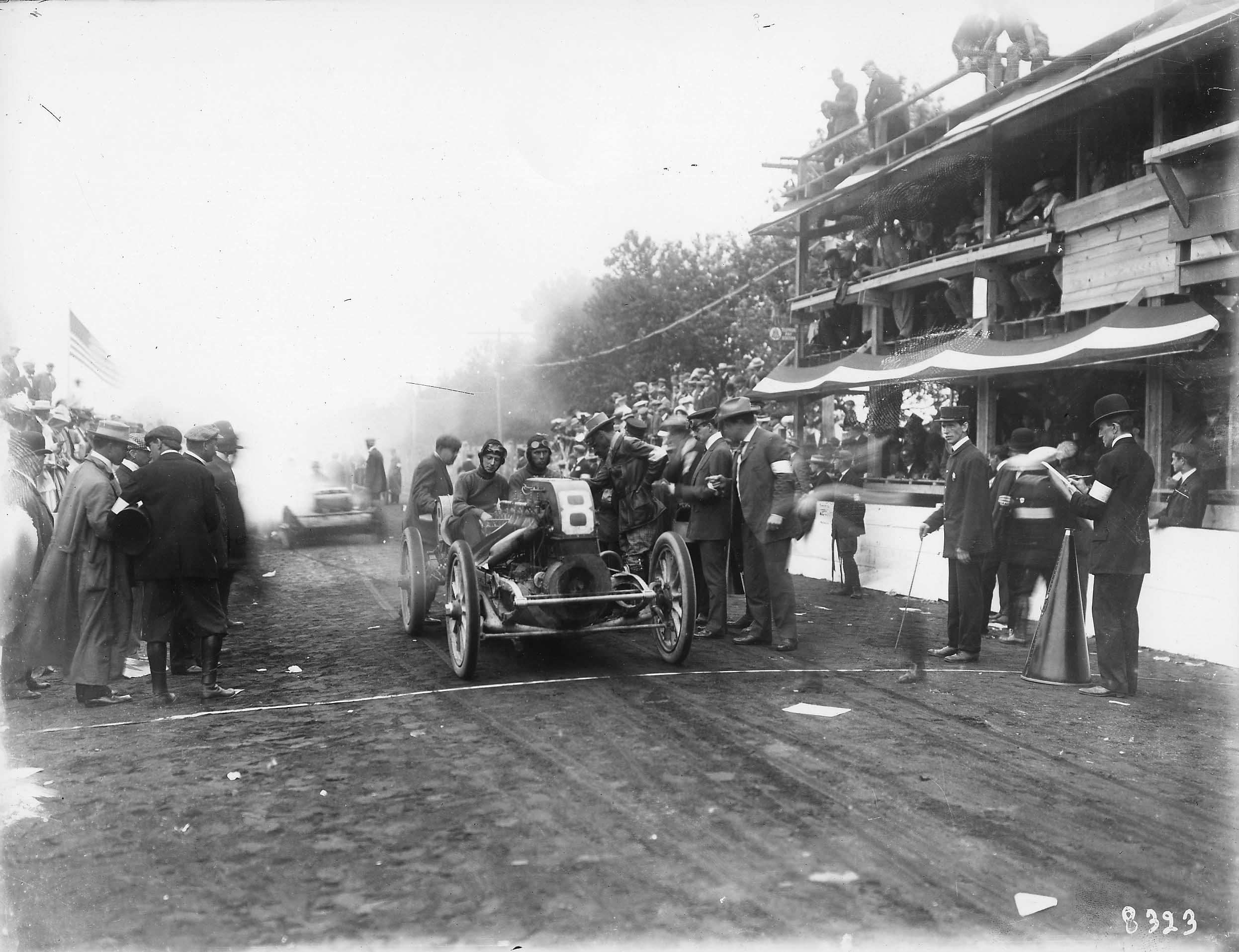
This is an expanded view of top photo. The size of the crowd, the presence of referee Willie K and PA announcer Peter Prunty (right with megaphone) and the decorations on the press box confirm the photo was the start of the #8 Frayer-Miller at the American Elimination Trial and not a practice run.
3. Comparative Photos of Eddie Rickenbacker
_edited-1-1.jpg) As noted by John Bayer, several photos of an older Eddie Rickenbacker do show a broader nose than his 1906 photo. But, as seen by this 1914 photo, the size of his nose looks different depending on his pose.
As noted by John Bayer, several photos of an older Eddie Rickenbacker do show a broader nose than his 1906 photo. But, as seen by this 1914 photo, the size of his nose looks different depending on his pose.
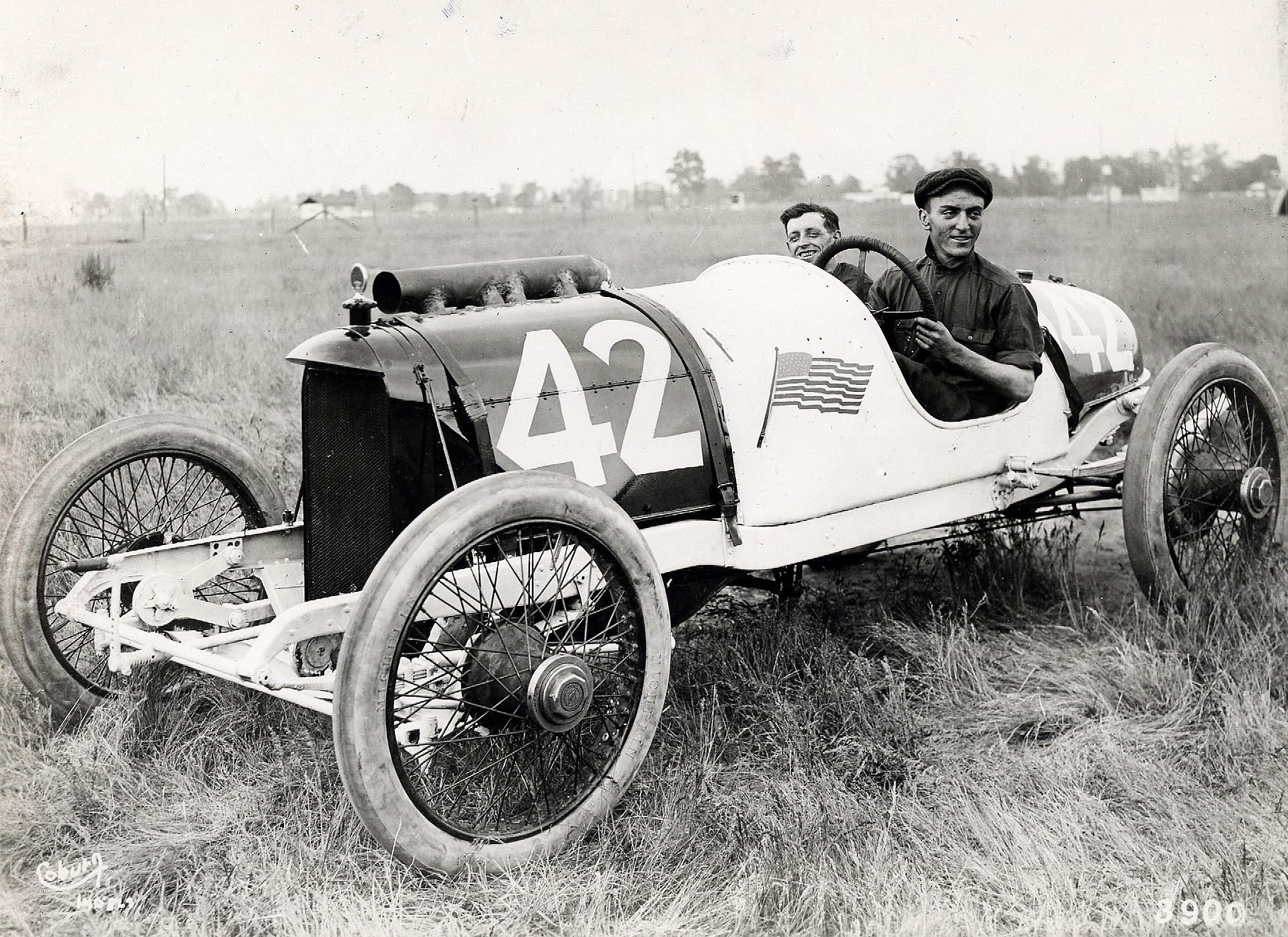
Driving the red, white and blue #42 Duesenberg in the 1914 Indy 500 Race, Eddie finished a strong 10th of the 42 entrants, averaging 70.8 mph and winning $1,400.
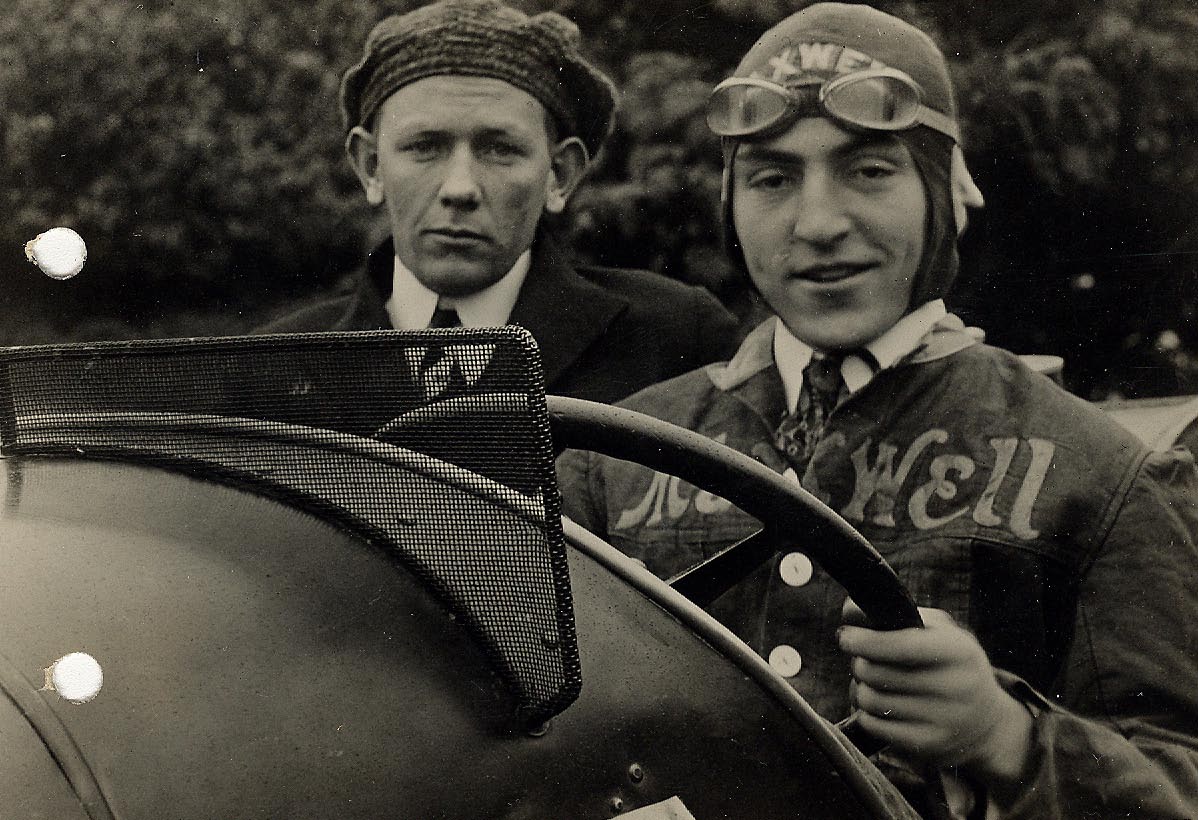
Rickenbacker drove a Maxwell during the 1915 to 1916 seasons.
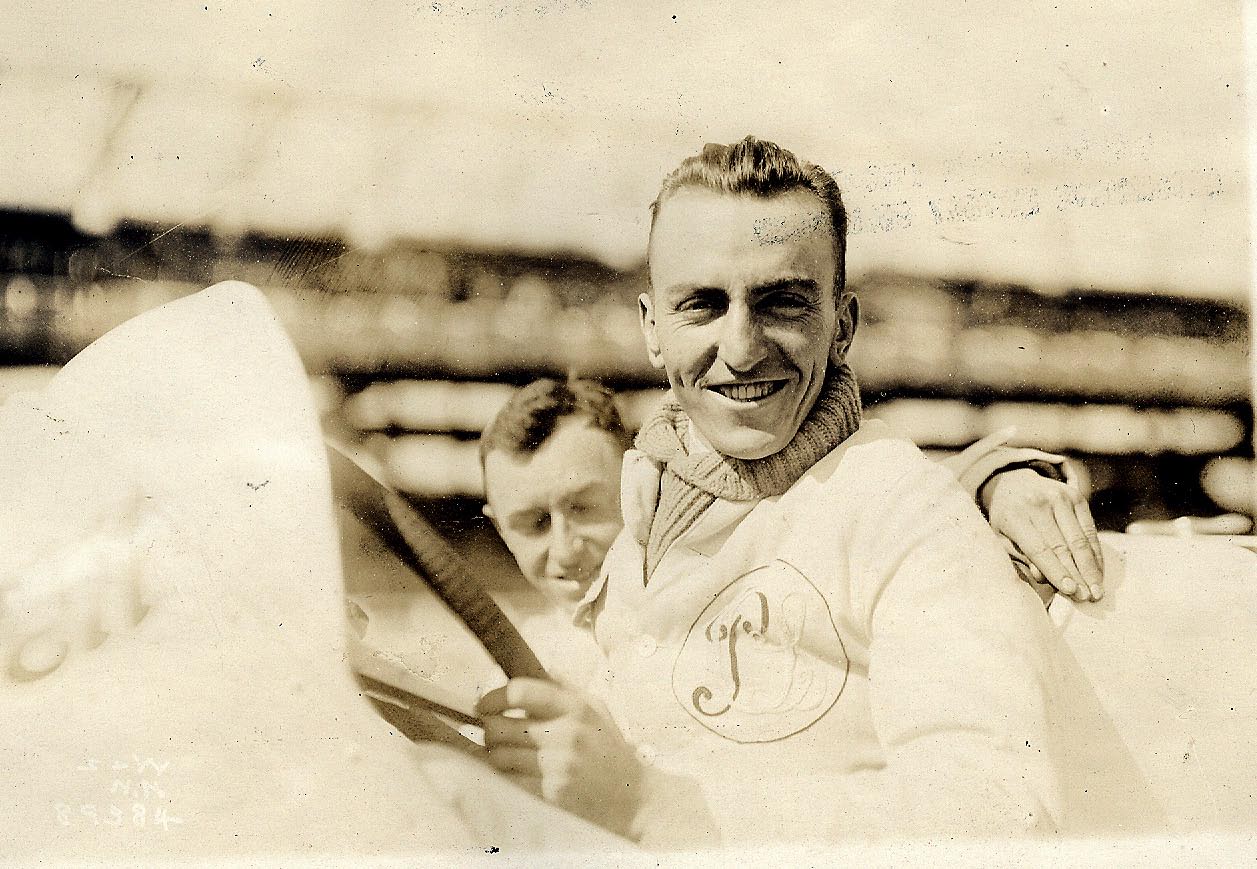
A view of Eddie driving for the Prest-O-Lite Racing team before World War I.
.jpg) Although he was two years older than the military age limit of 25 for flying, his military career as a pilot is legendary. Rickenbacker became America’s top fighter pilot during World War I and earned the title as America’s “Ace of Aces”. In a brief seven months of wartime flying in 1918, he downed more enemy aircraft than any other American, shooting down 22 German planes and four observation balloons.
Although he was two years older than the military age limit of 25 for flying, his military career as a pilot is legendary. Rickenbacker became America’s top fighter pilot during World War I and earned the title as America’s “Ace of Aces”. In a brief seven months of wartime flying in 1918, he downed more enemy aircraft than any other American, shooting down 22 German planes and four observation balloons.
Update: January 8, 2011: Image from Walter McCarthy
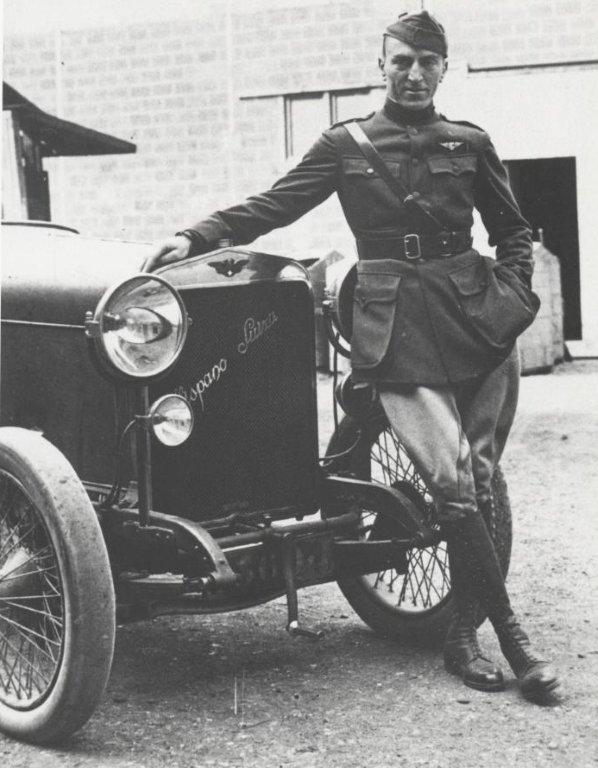
Eddie Rickenbacker in front of a Hispano-Suiza.
Conclusion
I still believe the mechanician riding with Lee Frayer in the above photo was Eddie Rickenbacker (90% probability). There are definitely physical similarities especially with the 1914 pose..although I don't "nose" for sure. Moreover, if the mechanican was someone other than Eddie Rickenbacker, how do you reconcile Rickenbacker's autobiography with the 1906 photo?
Do you agree? I would enjoy to hear any comments below.
Links to related posts on VanderbiltCupRaces.com
Eddie Rickenbacker: America’s Ace of Aces and Vanderbilt Cup Participant
Article "Captain Eddie Rickenbacker" by Damon Runyon
Starting Lineup: The 1906 American Elimination Race
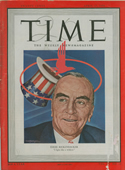




Comments
Hi Howard, I sent you another Rickenbacker photo you may want to include in this collection. Regards, Walter
Hi Walter:
Photo added above. Thanks!
Howard
Cycle & Automobile Trade Journal, Oct.1, 1906, says that Lee Frayer’s mechanic in the Elimination Race was Dick Offenberg, no mention of Eddie Rickenbacker.
In Rickenbacker’s biography he claims the engine overheated, started knocking and Frayer stopped as a piston was about to seize.
The actual report in the Cycle & Auto Journal story is that a bronze casting strut (a frame support) broke, letting the propeller shaft move out of place which broke the clutch.
The Cycle & Auto Journal story seems quite detailed and is accurate regarding all the other mechanician names.
My grandfather, Harry Burns, told us that he helped on Eddie Rickenbacker’s race team. Is there a good way to research that to verify it?
Thank you,
Richard Burns
_________________________________________________
From Howard Kroplick:
Richard, Rickenbacker had a fairly extensive racing career. Do you know where your grandfather was part of the race team?
Rick’s nose was broken often. It got spread way out following the Eastern flight 21 crash in 1941.